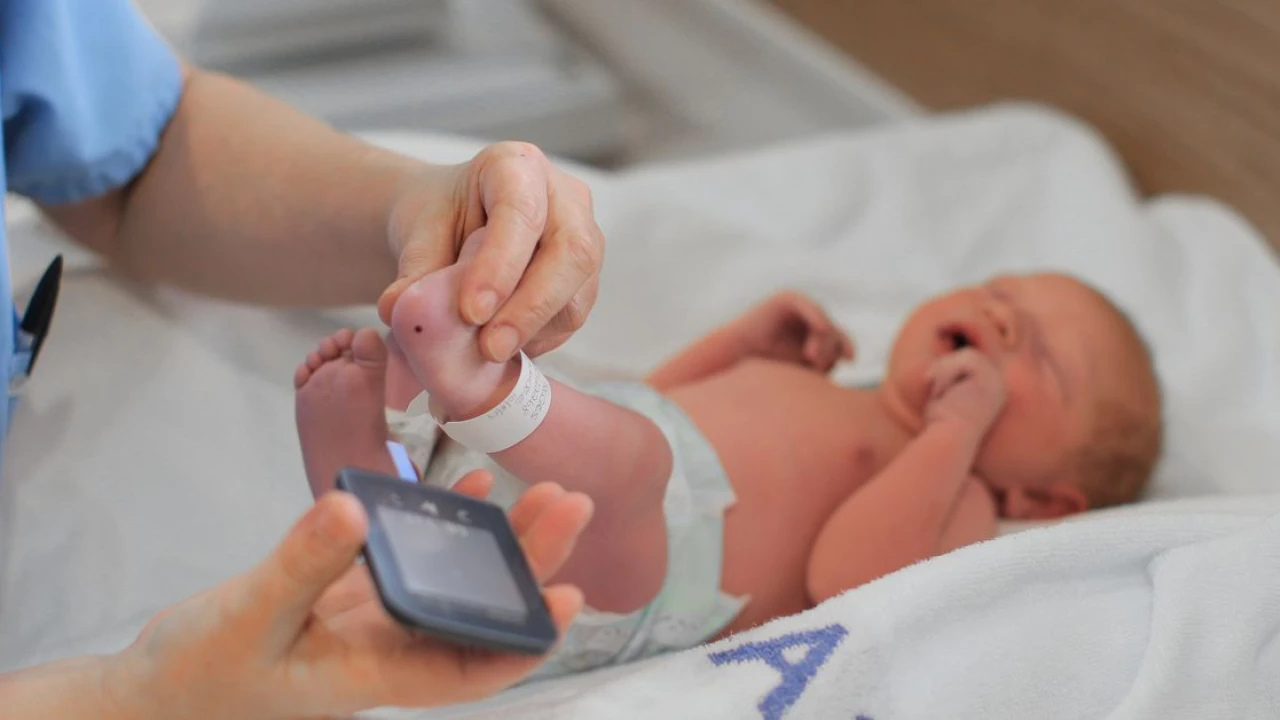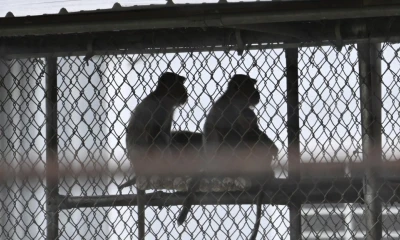Regional
Why I’m glad my newborn received a false positive test for a rare genetic disorder
In October, my newborn was diagnosed with “bubble boy disease.” The test, although anxiety-inducing, shows progress in treating babies for rare genetic disorders.

Four days after our daughter was born this October, we got a call from the hospital — they wanted us to take her back in right away to rerun one of the newborn screening tests. It turns out her initial test indicated that she had practically no T cells, a key part of the immune system. While every doctor assured us that the test was very likely a false positive, they wanted us to avoid giving her live virus vaccinations while we waited for a retest.
I don’t want to keep you in suspense: The retest two weeks later learned that it was indeed a false positive, and she was totally fine. But for an anxious new parent, two weeks is a very long time, and while we waited for an answer, I spent a lot of time learning more than you’d ever want to know about the US newborn screening program. It’s one of our health care system’s most impressive accomplishments, and something parents usually never have to think about — unless something goes terribly wrong.
The extraordinary balancing act of screening for rare diseases
When a baby is born in California, where my family lives, nurses take a tiny blood sample from a foot prick and send it on to a lab. There, that spot of dried blood is tested for more than 80 serious but treatable genetic disorders. (Most states have a similar system, but the exact details of testing vary by state.) One of those is SCID, or severe combined immunodeficiency, which you may have heard of as “bubble boy” disease. SCID can be inherited, but it is often the result of a genetic mutation, and it affects about 1 in 58,000 babies.
If SCID isn’t identified, babies who have it will typically die of an infection within the first year of life. If it is identified early enough, though, there are now treatment options that give babies an 80 percent to 95 percent chance of survival. It’s exactly the kind of condition the newborn screening program is meant for: fatal without early detection, treatable with it.
But to appreciate the immense challenge of effectively screening for SCID, we need to look a little at the mathematics of screening for rare diseases. Imagine you have a test that identifies every single SCID baby in the entire United States, and has a 1 percent false positive rate — that is, if a baby is perfectly healthy, 99 percent of the time the test returns “perfectly healthy” and 1 percent of the time the test wrongly identifies them as immunocompromised. For every 58,000 babies, you’ll find one real case of SCID — and 580 false positives. With doctors testing for some 80 different genetic disorders, chances are good that nearly every family will be spuriously told their baby may have a serious illness.
To test for a sufficiently rare condition, it’s not good enough for your test to be 99 percent reliable. You need something more like 99.9 percent reliability — and even then, your false positives will outnumber your true positives 60:1. This means that screening on a population level for rare conditions requires ultra-high test reliability.
And that’s not the only constraint. The tests have to be runnable on a single spot of dried blood. They have to be inexpensive, since we run them for every single newborn, and they have to be automatable, since we need to process the tests rapidly.
By all of those criteria, the test for SCID is a triumph of medicine. Only 0.08 percent of infants require a second test, which is an ultra-low false positive rate; the test can be run cheaply on a single spot of blood alongside the many other newborn screening tests; and the test reliably identifies babies who would otherwise die in time to save them.
The result is that a condition that was invariably fatal just a few decades ago now has a very high survival rate, and most parents never even know that their child was screened for it.
Progress and rare diseases
Having a baby is a humbling experience. For us, one part of that experience was the reminder of how much medicine has raced forward behind the scenes. I’d heard of “bubble boy” disease but didn’t know it was now so effectively treatable. I had no idea how much engineering work had gone into making these tests reach extraordinary standards of reliability and affordability.
There’s a common refrain in the tech world that while digital technology marches on, “there’s been limited progress in the world of atoms” — in the physical stuff, from planes to houses to schools, that really makes a difference in our lives. But I think it’s easy to undercount progress when it is, intentionally, mostly invisible.
A few decades ago, SCID was a fatal diagnosis, and now it isn’t. Until pilot studies began from 2008–2010, there was no cheap, reliable way to test for it, and now there is. Until 2019, the test wasn’t conducted nationwide, and now it is. Unless your child has a rare genetic disorder, you probably have no occasion to think about how far we’ve come in detecting and treating such conditions — and indeed, researchers have worked extraordinarily hard to make sure you don’t need to think about it by designing tests with extremely low false positives.
All this progress can be measured in lives: Overall infant mortality in the US was roughly 20 in 1,000 live births in 1970, then 7 in 1,000 live births in 2000, and then 5.6 in 1,000 live births in 2022.
That’s still too high — Europe does better — but to about 15 families in every 1,000 who might otherwise have lost their child, it’s a pretty huge way the world is much better than it was 50 years ago. And while SCID in particular is too vanishingly rare to show up much in overall mortality statistics, the progress we’ve made in detecting and treating it is mirrored in many other rare diseases — not to speak of how much we’ve improved care for premature babies.
Despite the anxiety, I’m enormously grateful for the SCID test that our baby turned out not to need. For every couple dozen families like ours who spent a few weeks fretting and turned out to be fine, there’s a family that learned their baby was sick in time to save them.
A version of this story originally appeared in the Future Perfect newsletter. Sign up here!
-

 Pakistan 20 hours ago
Pakistan 20 hours agoPunjab Police release PTI top leaders, SIC chief after brief detention
-

 Technology 1 day ago
Technology 1 day agoPTA blocks unregistered VPNs in Pakistan
-

 Pakistan 1 day ago
Pakistan 1 day agoCOAS Munir and Australia army chief vow to strengthen defense cooperation
-

 Business 19 hours ago
Business 19 hours agoGold price plunges Rs7,000 per tola in Pakistan
-

 World 1 day ago
World 1 day agoHours for Nawafil prayer scheduled in Hateem
-

 Pakistan 2 days ago
Pakistan 2 days agoSmog, fog: Low visibility, Punjab motorways closed
-

 Regional 15 hours ago
Regional 15 hours ago22 passengers drown as bus falls into river in Diamer
-

 Regional 21 hours ago
Regional 21 hours agoWedding bus capsizes in river, two dead, 22 missing



























